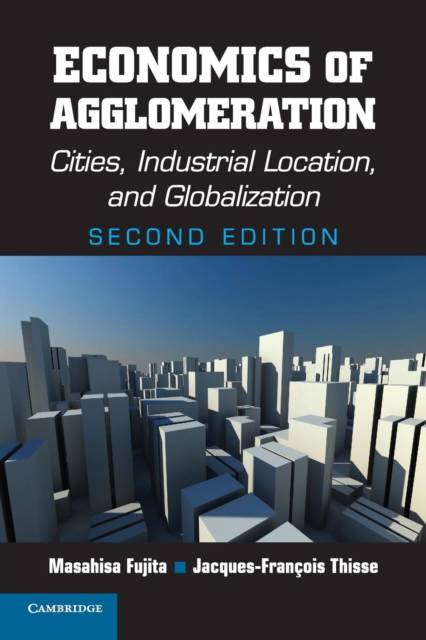
- Afhalen na 1 uur in een winkel met voorraad
- Gratis thuislevering in België vanaf € 30
- Ruim aanbod met 7 miljoen producten
- Afhalen na 1 uur in een winkel met voorraad
- Gratis thuislevering in België vanaf € 30
- Ruim aanbod met 7 miljoen producten
Zoeken
Economics of Agglomeration
Cities, Industrial Location, and Globalization
Masahisa Fujita, Jacques-François Thisse
Paperback | Engels
€ 68,95
+ 137 punten
Uitvoering
Omschrijving
Economic activities are not concentrated on the head of a pin, nor are they spread evenly over a featureless plane. On the contrary, they are distributed very unequally across locations, regions, and countries. Even though economic activities are, to some extent, spatially concentrated because of natural features, economic mechanisms that rely on the trade-off between various forms of increasing returns and different types of mobility costs are more fundamental. This book is a study of the economic reasons for the existence of a large variety of agglomerations arising from the global to the local. This second edition combines a comprehensive analysis of the fundamentals of spatial economics and an in-depth discussion of the most recent theoretical developments in new economic geography and urban economics. It aims to highlight several of the major economic trends observed in modern societies.
Specificaties
Betrokkenen
- Auteur(s):
- Uitgeverij:
Inhoud
- Aantal bladzijden:
- 544
- Taal:
- Engels
Eigenschappen
- Productcode (EAN):
- 9780521171960
- Verschijningsdatum:
- 6/08/2013
- Uitvoering:
- Paperback
- Formaat:
- Trade paperback (VS)
- Afmetingen:
- 152 mm x 226 mm
- Gewicht:
- 748 g

Alleen bij Standaard Boekhandel
+ 137 punten op je klantenkaart van Standaard Boekhandel
Beoordelingen
We publiceren alleen reviews die voldoen aan de voorwaarden voor reviews. Bekijk onze voorwaarden voor reviews.











